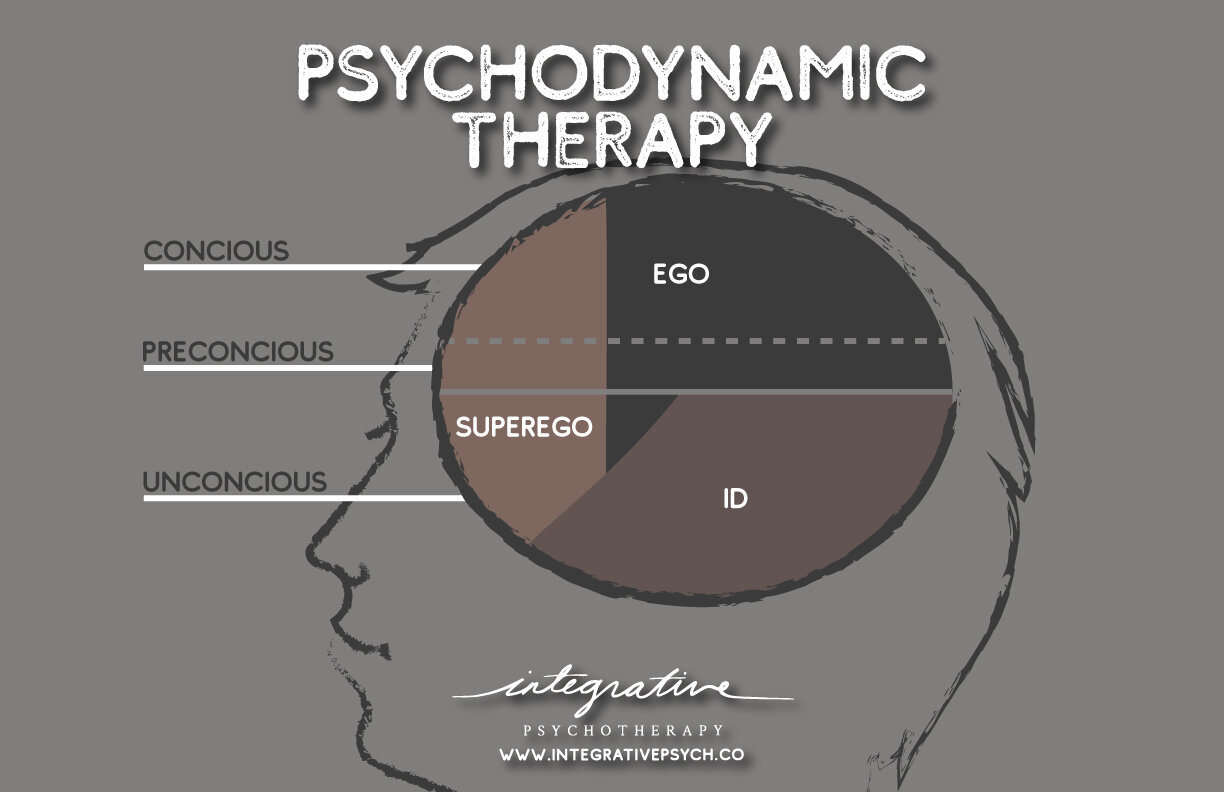What is Psychodynamic Psychotherapy?
Insight Focused Therapy & the Psychotherapy Relationship
Psychodynamic therapy, also known as “insight-oriented therapy”, places a strong emphasis on the importance of building a solid connection and working partnership between therapist and client.
Guided by the therapist, clients explore symptoms that arise from past dysfunctional relationships, unresolved conflicts and the unconscious meanings and motivations behind their problematic behaviors, feelings, and thoughts, in order to effectively change them.
As the oldest of all of the modern therapies, psychodynamic therapies are rooted in Freudian Psychoanalytic Theories. Ego Psychology, Object Relations, and Self Psychology are blended in with this Freudian foundation to create a well-balanced approach to healing early life experiences, and working to change misguided core beliefs.
The main goals of psychodynamic therapy is to help clients develop self-awareness and an understanding of how the past influences present behavior.
Clients are encouraged to speak freely and look for patterns in their emotions, thoughts, beliefs, desires, and fears. The theory is that being open to vulnerability (by expressing feelings that are normally shoved deep down into the subconscious), feelings can be processed, and defense mechanisms reduced or resolved.
While Freudian theory has been watered down completely, a few core concepts remain prominent within the psychodynamic approach;
The unconscious mind greatly impacts human behavior and emotion
There is always a reason behind behaviors
Childhood experiences influence adult thoughts, emotions, and behaviors
Significant childhood experiences shape and develop our overall personality as adults
Some Key Terms In Psychodynamic Therapy
Defense Mechanisms are behaviors that people use to protect themselves from unpleasant situations, feelings or thoughts (such as guilt or shame). This idea stems from Freud’s psychoanalytic theory, that sees personality as the interaction between the id, ego, and superego. Defense mechanisms are a normal part of psychological development. The most common ones are; denial, repression, rationalization, projection, displacement, regression, sublimation, intellectualization and compartmentalization.
Transference is the unconscious redirection of feelings about one person towards another person. When we meet a new person that reminds us of someone else, we unconsciously infer that the new person has traits similar to the other person. In a therapeutic context, it refers to the redirection of a patient's feelings for a significant person in their life towards the therapist. In therapy, this can be both a positive thing or potentially harmful. For instance, it’s pretty normal for a therapist to remind us of a parent. If those feelings were positive, that can aid in the therapeutic process. If the parent was abusive, a client might shut down because they assume that the therapist will react in an abusive way.
Parentification is only one of the ways that transference can show up. Other ways include erotic attraction, rage, hatred, mistrust, extreme dependence, or even placing the therapist in a god-like role (and then maybe getting disappointed when their human side is shown). Freud believed "the transference, which, whether affectionate or hostile, seemed in every case to constitute the greatest threat to the treatment, becomes its best tool".
Countertransference is the redirection of a therapist's feelings or emotional enmeshment toward a client. A therapist's attunement to their own countertransference is as critical as understanding the transference. In order for therapists to be successful, remain professional and not burn out, they must tune in to the countertransference and keep their emotions regulated.
ADVANTAGES:
Combines really well with other modalities
Helps to uncover the roots of challenges
Has lots of evidence to back up effectiveness
Some pointers to keep in mind:
Because this type of therapy is not directly about reducing or eliminating unwanted symptoms, it might take more time to see results (when combined with other therapies, this limitation is alleviated)
This type of therapy requires a longer-term commitment in order to be effective on its own.
Although the pace is self-directed by the client, it is a more hands-on approach, relying heavily on the relationship between therapist and client. The ability to do independent work is limited. (again, when combined with other therapies, this limitation is alleviated.
Psychodynamic therapy helps people who feel lost, or feel confused about why they behave the way they do, to finally make significant change.
Choosing to attend therapy with a psychodynamic approach can help you uncover some of the ways you are engaging with the world so you feel more empowered to make better, more empowered choices in all aspects of life: personally, professionally and spiritually.
Your relationship with your therapist will be a useful tool in this work; as therapy often brings up issues that you are facing in the outside world, and in the safety of a nonjudgemental therapist, you’ll be able to notice the behaviors, and gently challenge them. You’ll understand and work through some of the symptoms related to your anxiety, relationship issues, depression, as well as untangling from codependent or avoidant patterns you have been using.
Clients have found this therapy to be effective in getting un-stuck and in feeling more grounded, secure and focused as they move forward with life.
If you’re reading for some one-on-one help using this approach, reach out here. At Integrative Psychotherapy, we trained in psychodynamic psychotherapy and would be happy to help you!
A note about our fees: our session fee for individual therapy is $250-350, and we provide the paperwork for your insurance company for out of network reimbursement if you have out of network benefits.

